Do you dream of building stunning WordPress websites without the risk of messing with your live site? You know, like tinkering with your plugins, themes, or other sites without breaking anything for real. Well, you can do it using a local WordPress development tool.
The only question is, which local WordPress development tool is the best fit for your needs?
Introducing DevKinsta: a powerful local WordPress development tool crafted by Kinsta. It revolutionizes the way WordPress developers create, design, manage, and deploy WordPress sites locally with just a few clicks.
Today, we’ll explore DevKinsta’s features, installation process, website creation process, and overall effectiveness. So, let’s get this show on the road!
Getting Started with DevKinsta
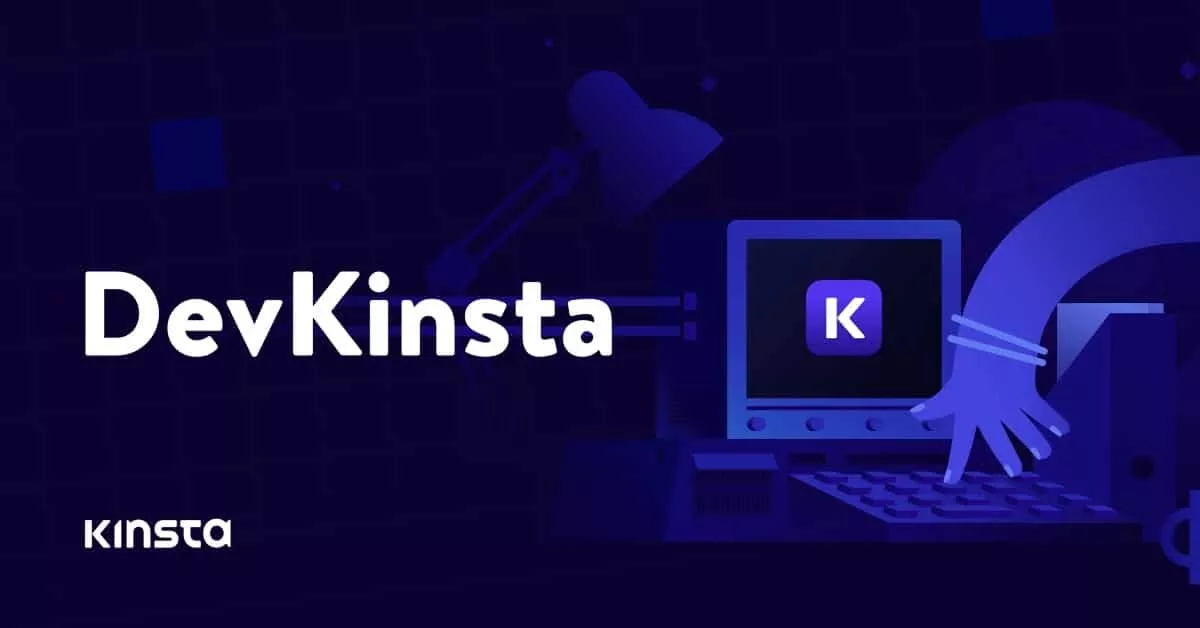
DevKinsta is available for all major operating systems like Windows, Mac, Ubuntu, etc. Here are the prerequisites and system requirements for creating a local WordPress development platform using DevKinsta.
Prerequisite
You’ll need only the following tools to create a local server using DevKinsta.
- DevKinsta
- Docker Desktop
System Requirements
Here are the official requirements for installing DevKinsta.
| Requirements | Minimum | Preferred |
|---|---|---|
| Disk Space | 5 GB | 10 GB |
| Memory | 2 GB | 4 GB |
| Docker Desktop Version | v2.0.0 | >=v4.17.0 (>=v2.5.0 for Ubuntu) |
However, there are some additional requirements for each operating system.
Windows:
- Make sure you have at least Windows 10 64-bit (Pro, Enterprise, or Education) version 16299 or later.
- Enabling the Hyper-V and Containers Windows features is recommended for better performance.
- You may need to enable the WSL 2 feature.
Mac:
- Your Mac hardware must be a 2010 or a newer model.
- macOS must be version 12.0 Monterey or newer.
Linux:
- DevKinsta is officially supported only for Ubuntu 20.04 LTS (or later) only.
Step-by-step Installation Process of DevKinsta
Here is the step-by-step process of installing DevKinsta:
1. Download DevKinsta
Downloading DevKinsta is pretty simple. It’s a completely free application. So, you don’t need to sign up for an account or provide any card information to download it. Just visit the DevKinsta official download page, click on the download button, and you are good to go.
Note: If you’re using macOS, make sure to install the appropriate version for your specific chip – Apple Silicon or Intel. You’ll see options for both versions on the download page.
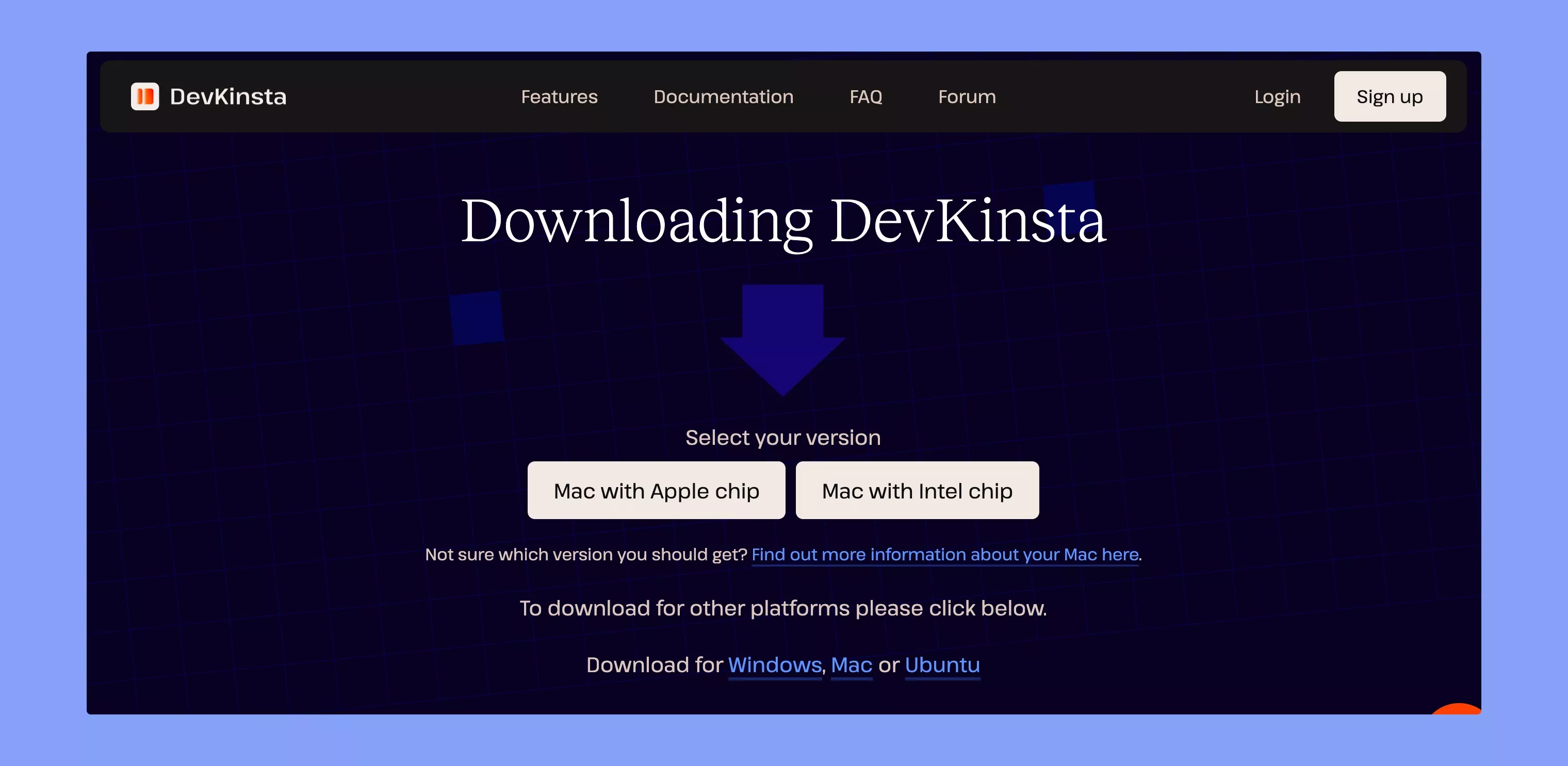
2. Initiate the Setup Process
Once the download is complete, locate the downloaded file and double-click it to initiate the setup process. Then, follow the on-screen tips to continue the setup process.
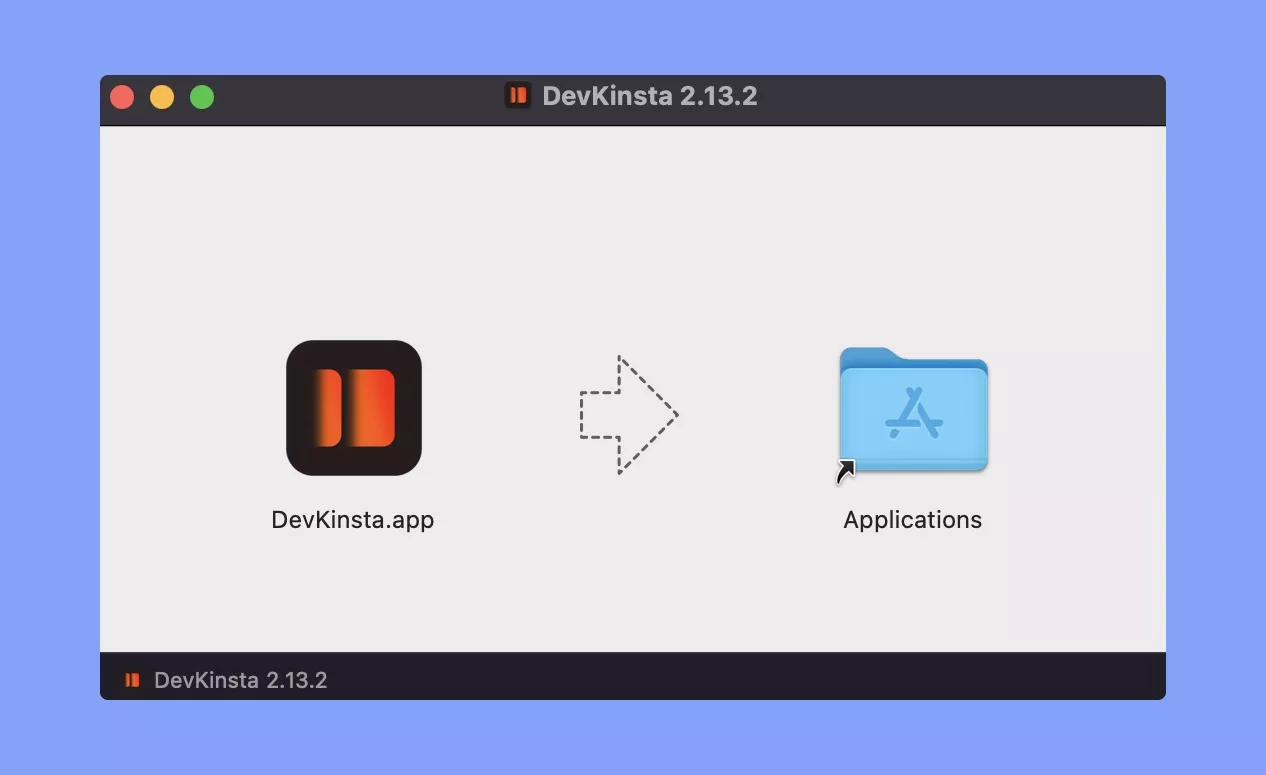
3. Install Docker Desktop
DevKinsta may prompt you to install Docker Desktop during the installation process. But you can also install it manually by downloading it from the Docker website.
DevKinsta requires Docker to create a separate container for each website. It allows you to adjust the development environment (e.g. PHP version, WordPress version) for each site.
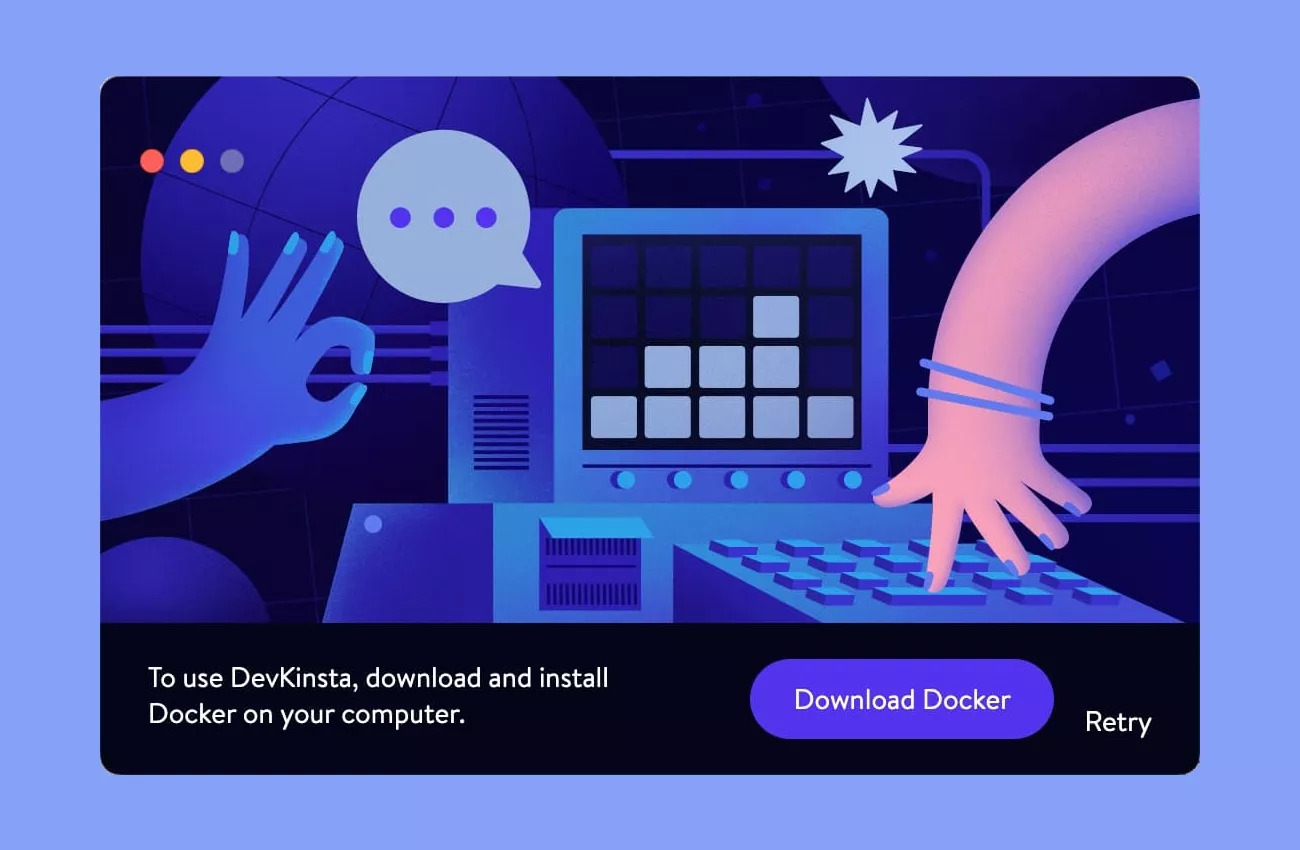
Follow the on-screen instructions to install Docker Desktop. Make sure to select the appropriate options and configurations as required.
4. Relaunch DevKinsta
After the Docker Desktop is successfully installed, you may need to relaunch DevKinsta. This step ensures that DevKinsta can detect and utilize Docker Desktop to create and manage local WordPress environments effectively.
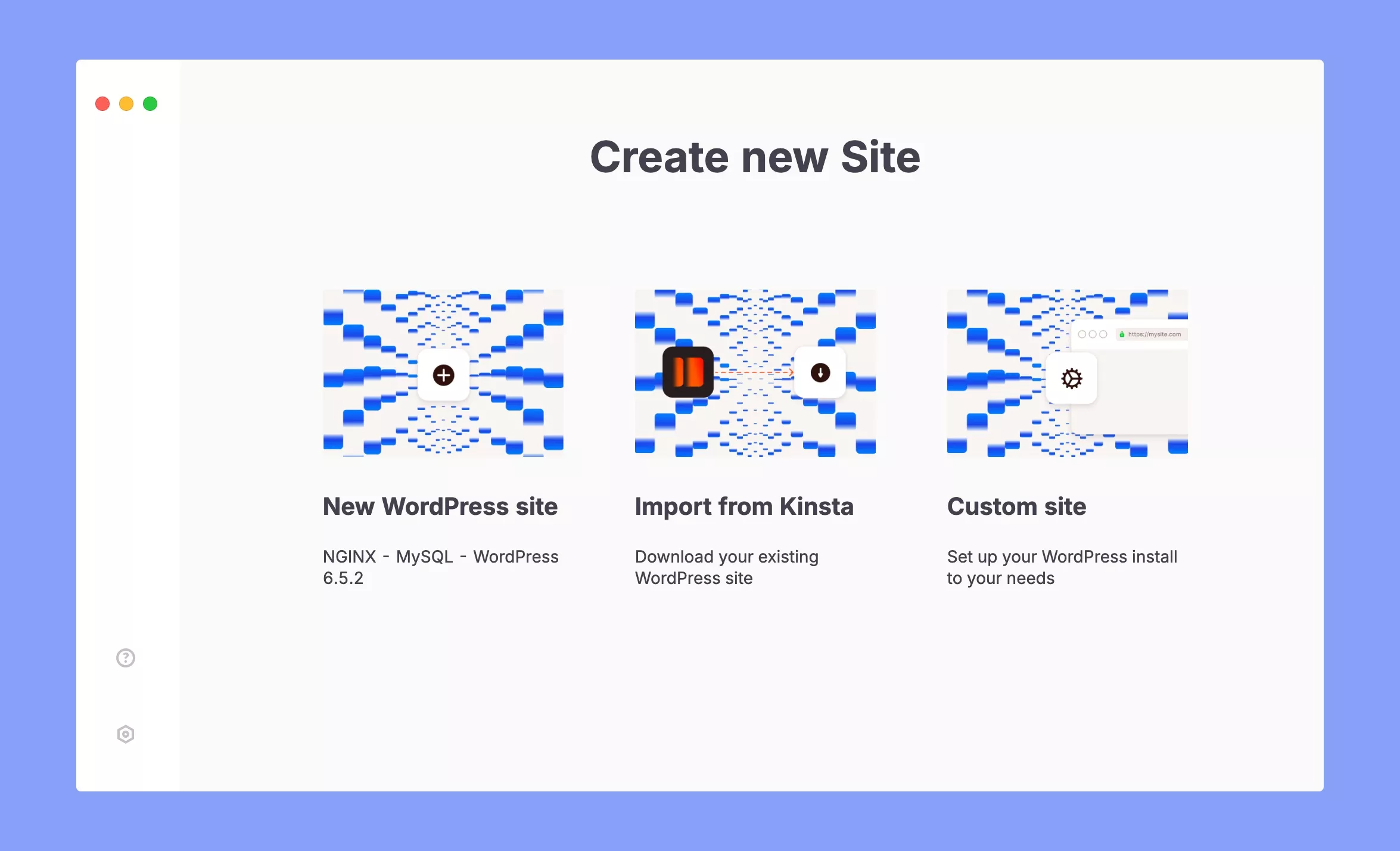
If you get this screen, it ensures that your installation is successfully completed. Now, you can proceed to create a new website using DevKinsta.
Create Your First Local WordPress Site
Here are the steps to create your first local WordPress website with DevKinsta.
1. Create a New WordPress Site
Launch the DevKinsta application and you will get three different options to choose from. These are:
- New WordPress site: Use this option to create a WordPress website with the default WordPress settings using MySQL and NGINX.
- Import from Kinsta: Import an existing WordPress site from your Kinsta hosting.
- Custom site: Select this option to create your website by customizing the PHP version, WordPress version, multisite setup, database name, etc.
Choose whichever option is suitable for you. Here, we’ll choose the ‘New WordPress site’ option to create a website faster.
After clicking on the ‘New WordPress site’ option, you have to set your website title and admin credentials. After that, click on the ‘Create site’ button.
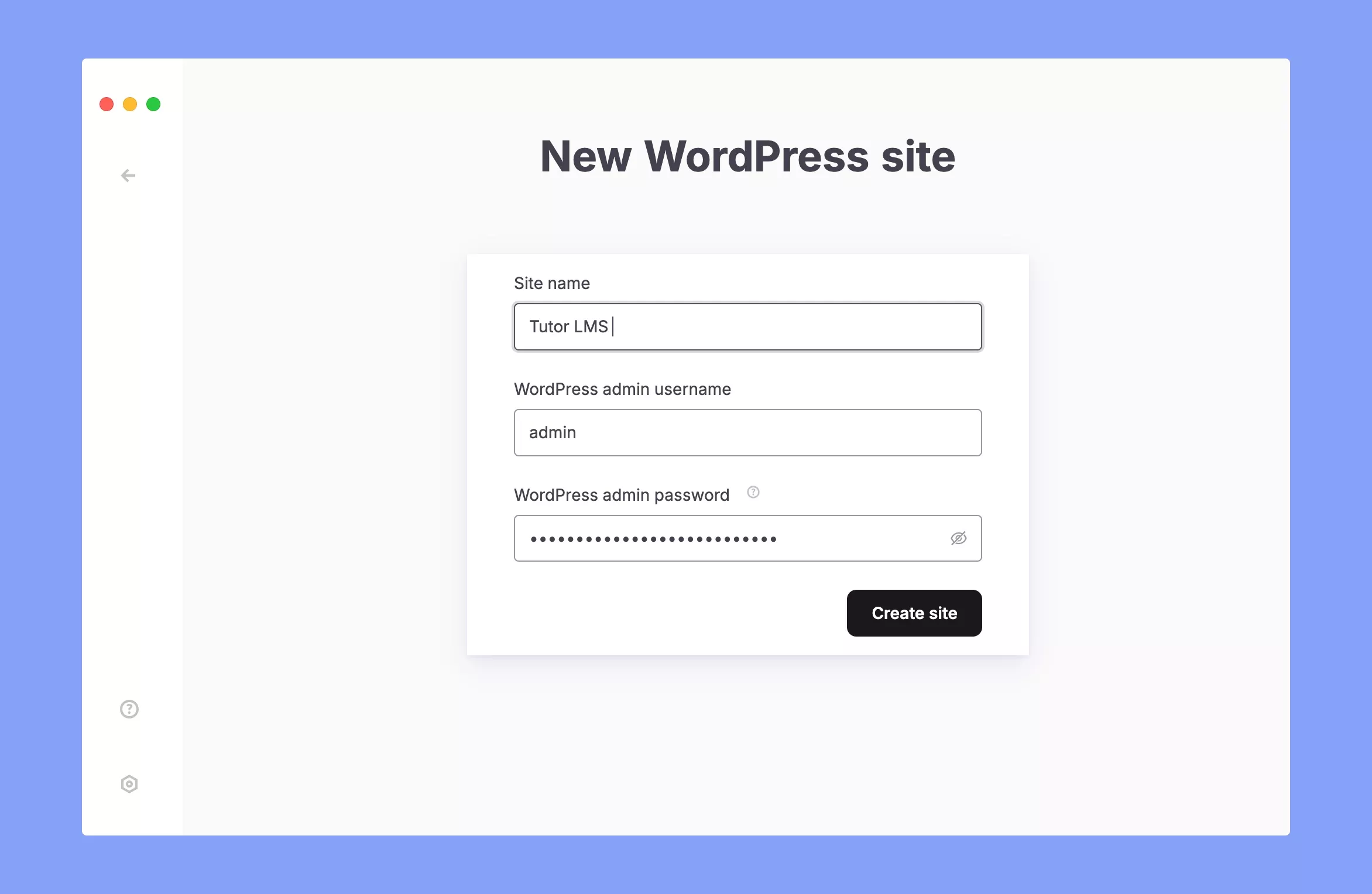
On the next screen, you can see the progress of your website creation, including NGINX configuration, MySQL setup, WordPress setup, host file, and DNS server updating.
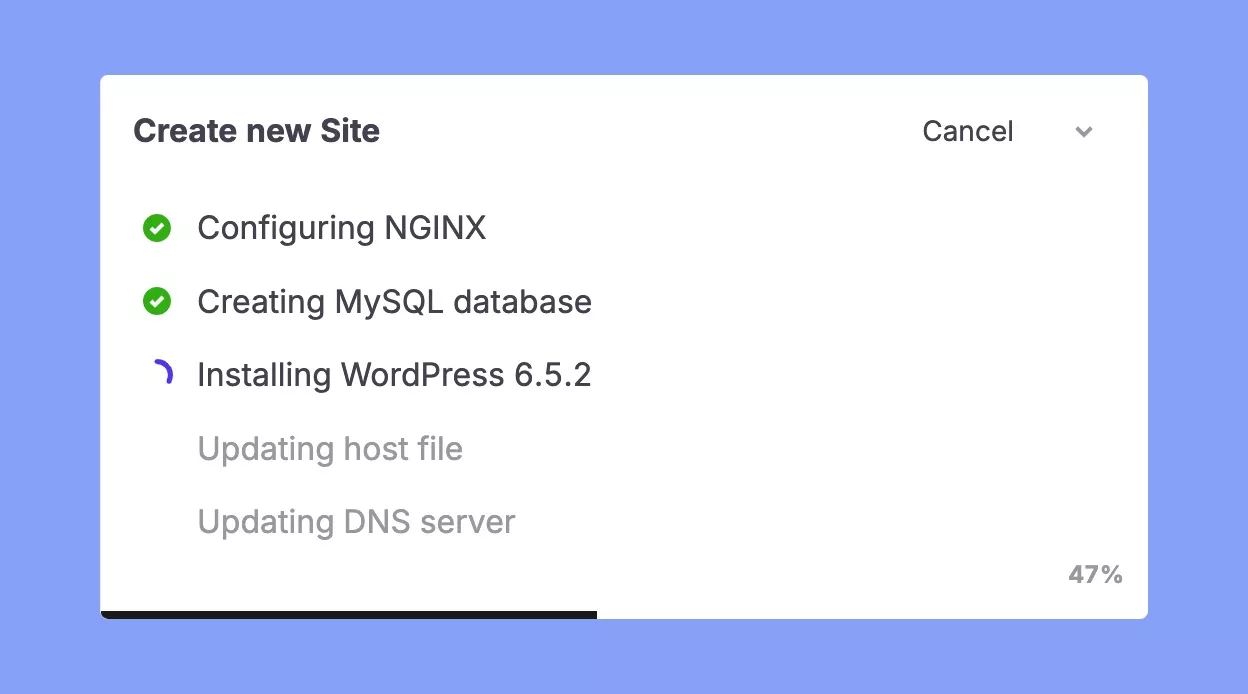
Note: DevKinsta needs permission to write the hosts file (for macOS: /etc/hosts, & for Windows: C:/Windows/System32/drivers/etc/hosts). It allows your site to use a pretty URL instead of an IP address.
Once the setup is completed, you’ll be automatically redirected to your website dashboard. There, you can view the technical details of your website. Besides that, you can also open the admin panel, check database, setup SSL, and lots more.
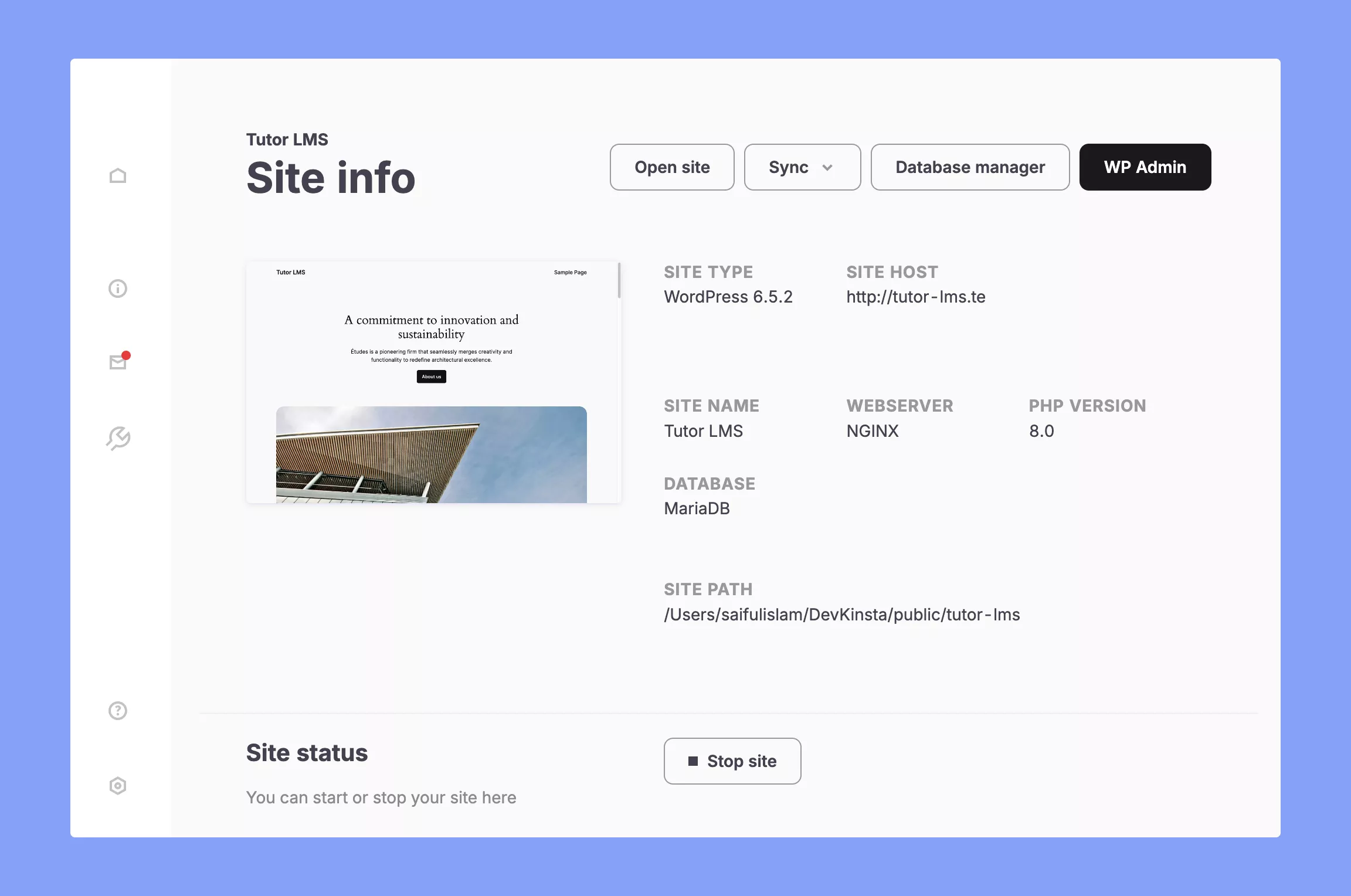
And that’s it! You just created your first WordPress website!
By the way, if you want more control over your WordPress install, you have to use the ‘Custom site’ option. That will let you choose different versions of PHP and WordPress and customize technical details like setting up WordPress multisite, SSL, and lots more.
2. Access Your Local Website
You can access or view your website right from the DevKinsta dashboard. For that, go to your website list and click on the ‘Open site’ icon. You can also access the local website folder or admin dashboard directly from the DevKinsta homepage.
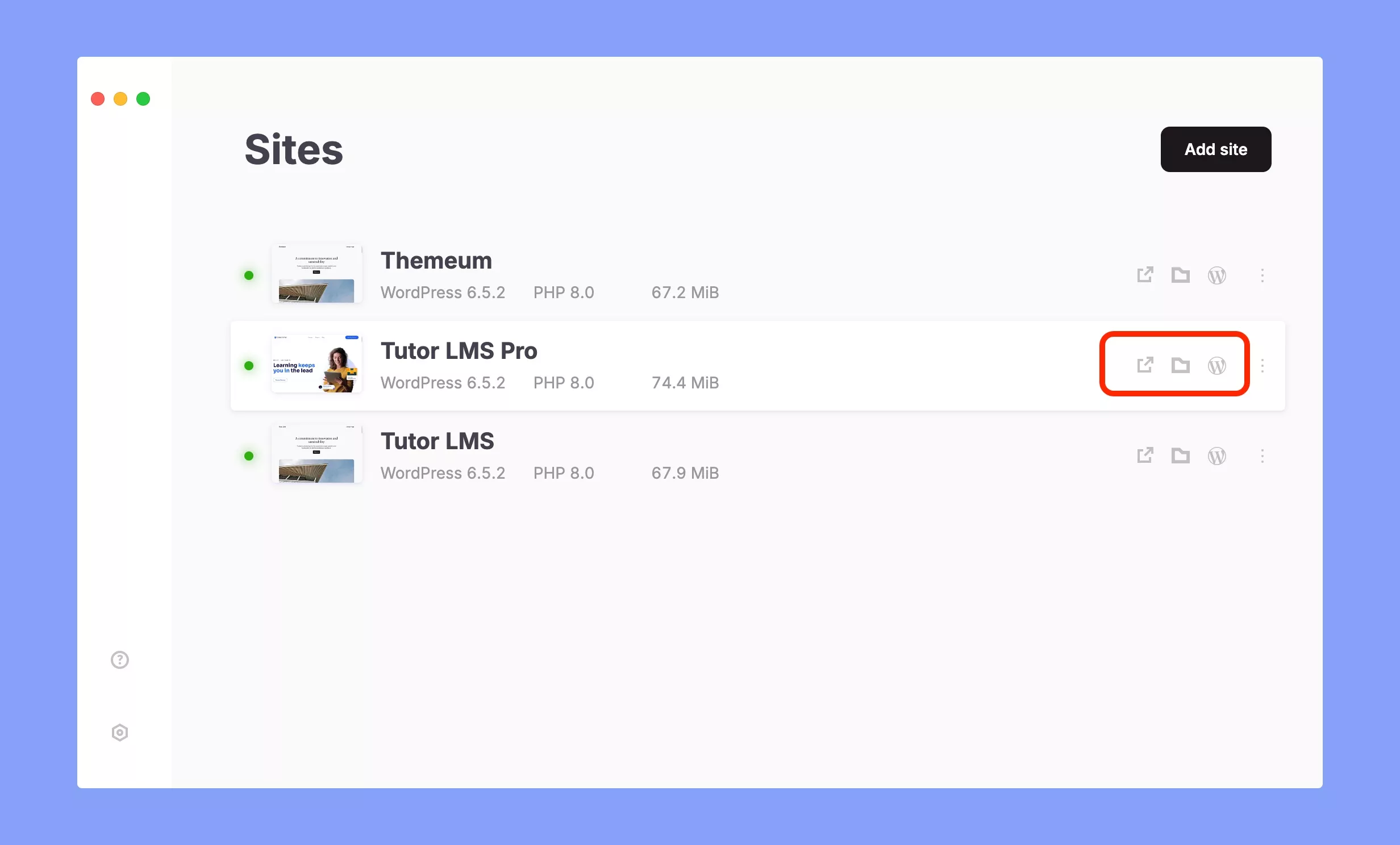
Clicking on the vertical ellipsis icon also allows you to access a few other important features, like cloning or renaming your website.
3. Test Email Inbox
DevKinsta’s email inbox offers a separate inbox for each local site’s emails. It uses MailHog to catch all outgoing emails from PHP mail(). You can check the emails by clicking on the envelope icon on the left side of the Site info page.
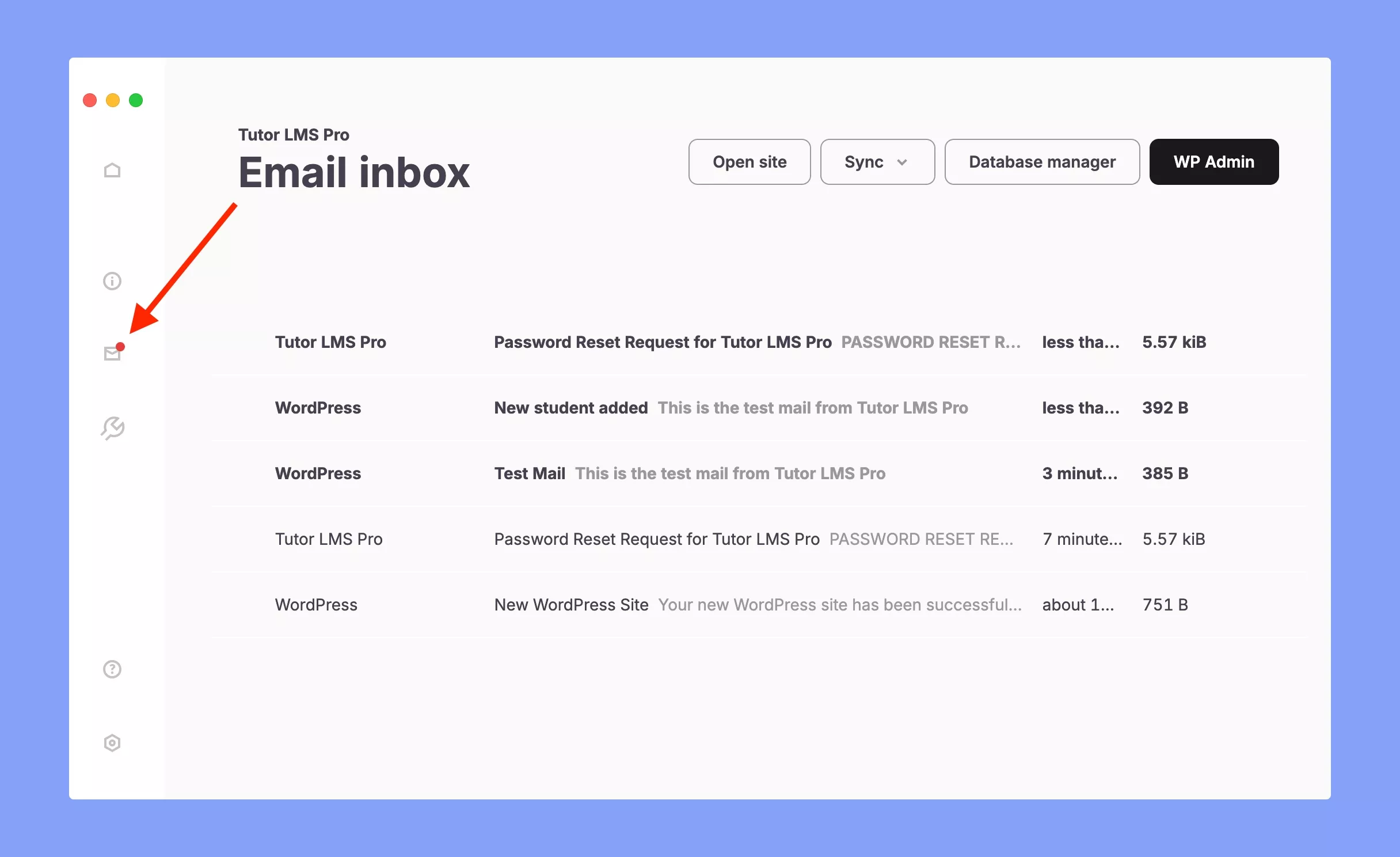
However, you can also check the MailHog logs using the following command:
docker logs -f devkinsta_mailhog4. Access Your Site’s Database
DevKinsta uses Adminer to display your website’s database. There are two different ways to access your website database –
- Click on the More menu (kebab/three-dot) in the site list and select ‘Open database manager’.
- Click the ‘Database Manager’ button at the top of the Site info page.
- Access from the host machine on port 15100 on your site’s IP.
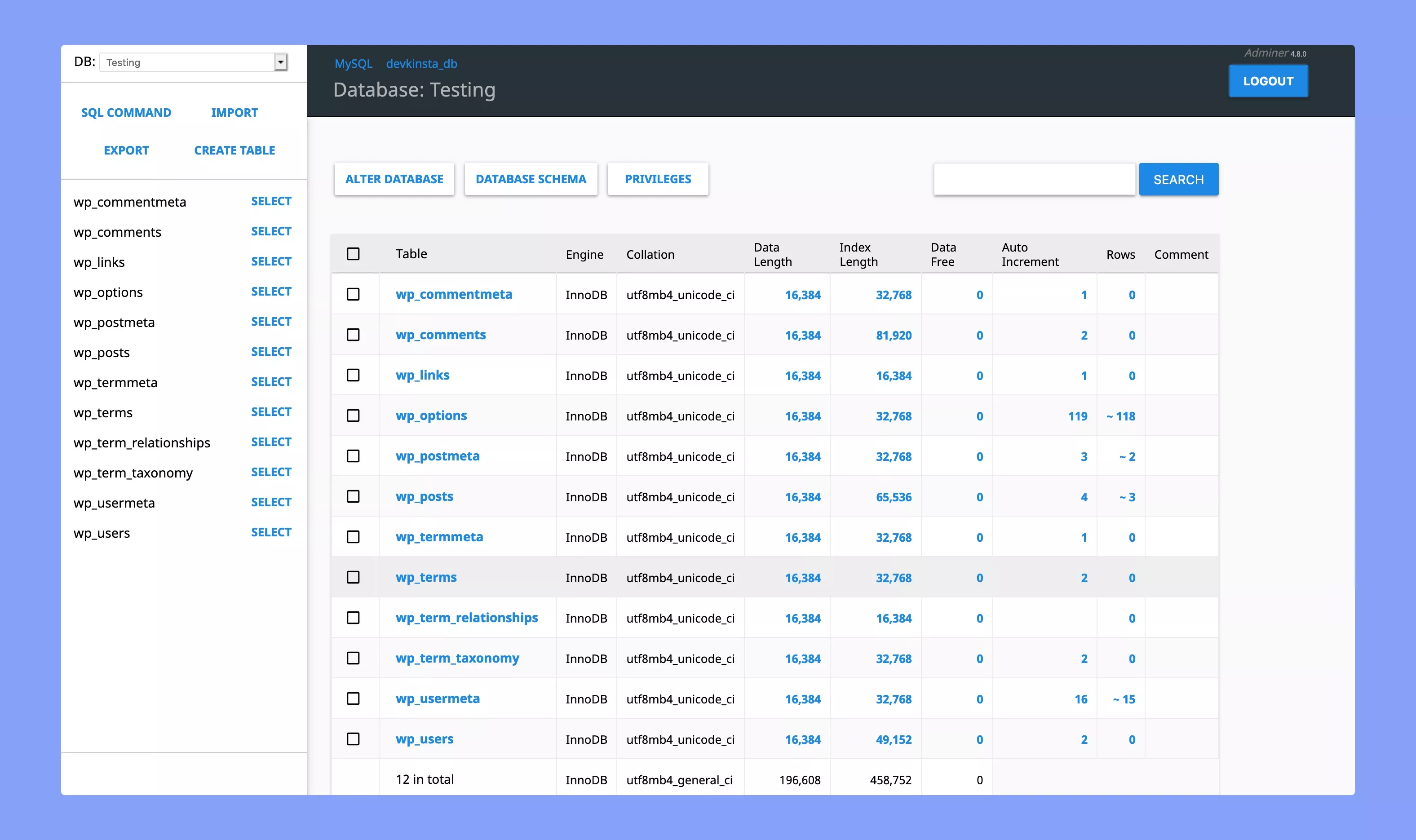
Most importantly, you can also access the database directly from the host OS. Use the following command on your terminal or command line:
mysql -h 192.168.99.254 -P 15100 -u root -pSo, that’s the overall process of creating a local WordPress website using DevKinsta.
Why You Should Use DevKinsta
DevKinsta is a comprehensive toolbox designed to empower you to build, test, and deploy stunning WordPress websites with ease. Here’s a breakdown of the key features that elevate your development experience:
- Effortless WordPress site creation: Forget complex setups! DevKinsta lets you create unlimited local WordPress sites with a few clicks. You can even create a multisite setup using DevKinsta.
- Integration with MyKinsta: If you’re a Kinsta hosting user, you can migrate your local development sites directly to your Kinsta hosting. Alternatively, you can also pull websites from MyKinsta to DevKinsta.
- Built-in database manager: DevKinsta uses the Adminer database management tool to manage your local WordPress databases directly from the dashboard. It includes editing tables, importing/exporting backups, and running SQL queries to fine-tune your website’s functionality.
- Local Email Management: DevKinsta offers a built-in SMTP server and email inbox for every website using MailHog. It helps you test and debug your email functionality by sending and receiving emails directly from your local WordPress site.
- Secure Local Development with HTTPS: Test your website with HTTPS enabled from the get-go. It ensures a secure development environment and helps you identify and fix potential security issues before launching your live website.
- Test with different PHP versions: Experiment with different PHP versions (PHP v7.2, 7.3, 7.4, 8.0, 8.3, etc.) to ensure PHP compatibility and website optimization.
- Debugging PHP errors: DevKinsta utilizes the WP_DEBUG tool to display PHP errors and leverage error logs for further troubleshooting.
- Utilizing WP-CLI: Leverage the power of the WordPress command-line interface (WP-CLI) to automate repetitive tasks like plugin installation, backup generation, file updating, flushing caches, etc.
- Community Support: DevKinsta has a robust WordPress community forum to exchange knowledge, provide feedback, and discuss different topics with fellow WordPress enthusiasts.
- Multilingual Support: DevKinsta is available in 10 different languages. These are English, French, Spanish, Portuguese, Dutch, German, Italian, Japanese, Swedish, and Danish.
Overall, DevKinsta is a solid software to create a local development environment. It offers the right balance of features and functionality for every developer and freelancer to build and develop WordPress sites locally.
Wrapping Up
DevKinsta is a suite of tools that eases the overall local WordPress site creation and development process. With its powerful features, you can efficiently build, test, and ultimately launch stunning WordPress websites.
Download it today and experience the difference!



